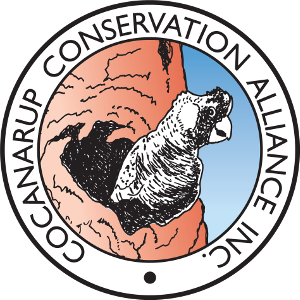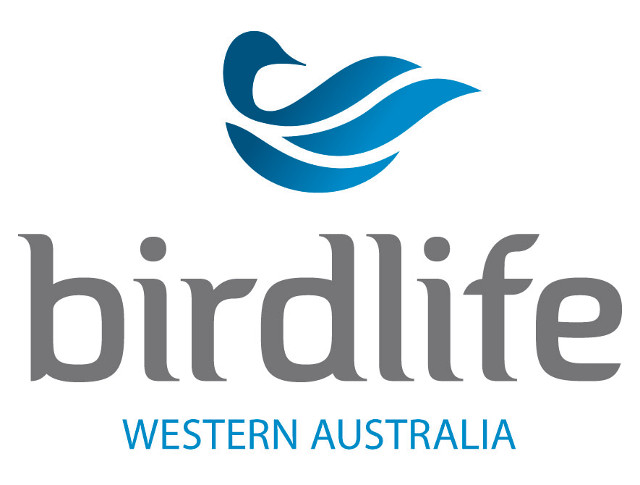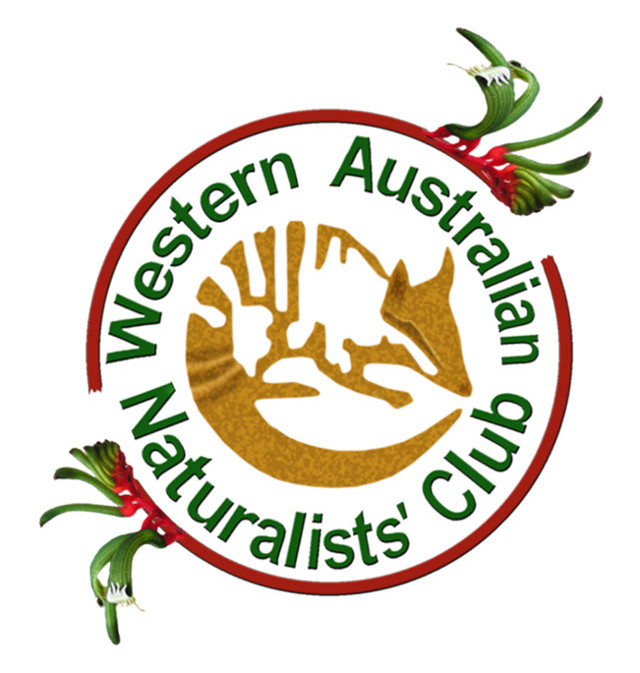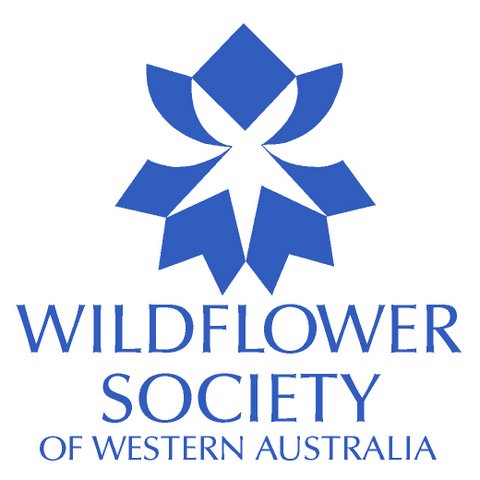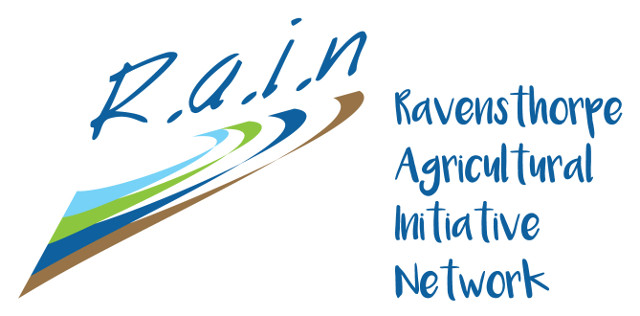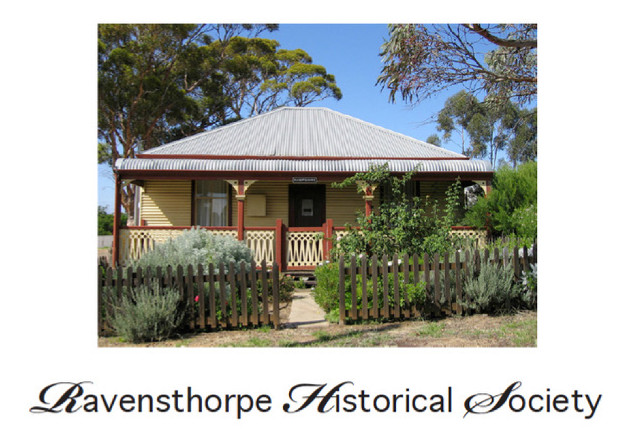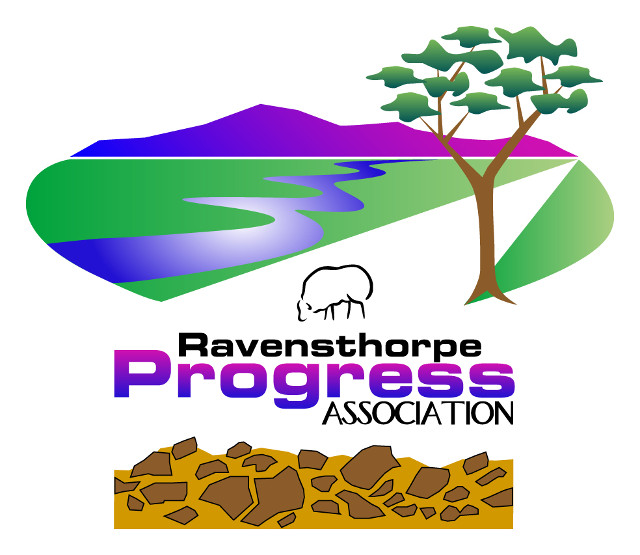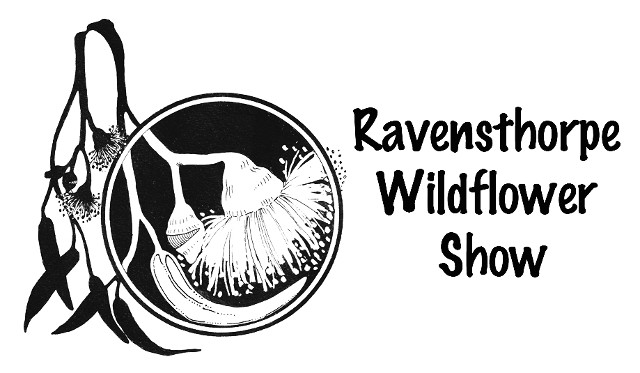The Ravensthorpe opportunity
“The town of Ravensthorpe is surrounded by a significant ecological, social, cultural and economic opportunity that has for decades been thwarted by somewhat irrelevant tenure classifications. It’s time we moved on from that.
The Ravensthorpe Range and the valley of the Steere and Phillips Rivers is well recognised as one of the most significant biodiversity areas in Australia, and is arguably the largest and most significant conservation need and opportunity left in south-western Australia. It contains an incredible array of species, with significant new discoveries still being made in recent decades, holds viable populations of a number of wildlife species lost from elsewhere, is the meeting place of a number of major ecosystem types and the only remaining area where the south coast and south-western ecosystems are connected to inland Australia.
While it holds areas of great importance in Noongar culture, as a meeting place for major clan groupings, as a key part of important storylines, and as an area where a brutal displacement of Noongar people occurred, it is only now starting to be recognised as such with areas of land around Ravensthorpe under discussion as part of the South West Native Title Settlement...”
“Recent concerns over possible exploration damage to one critical bird nesting site very rapidly gained national attention and support. Wouldn’t it be great if the community could leverage off all this extra support and profile to achieve ‘more than’ winning the next few battles we will inevitably have on our hands under current arrangements?
Apart from the attitude of earlier Shire Councils, over preceding decades the main impediment to conservation status for the area was the mineral interest, and the incompatibility of ‘A’ class reserve status with mining. Well, my reading is the world has moved on, and I think it is now time we resolved the anomaly of a major unconserved and largely unmanaged area of extremely high conservation value (both in terms of its intrinsic species but also for larger scale ecological function in south-western Australia)...”
(Gondwana Link, ‘The Ravensthorpe Opportunity’, 2/5/2024)
Unallocated Crown land and the implications of piecemeal management
Unallocated Crown land and the implications of piecemeal management
It is increasingly urgent that the matter of tenure and management of the Cocanarup – Kundip area and the adjoining Ravensthorpe Range be resolved. The current tenure of unallocated Crown land (UCL) or unmanaged reserve (UMR) has resulted in many examples of haphazard actions not aligned with the area’s significant values. The security of Class A Reserve tenure is urgently required, along with an agreed management plan with resources and mechanisms in place to ensure responsible and coordinated management.
According to the Land Administration Act 1997, the term unallocated Crown land means Crown land -
- in which no interest is known to exist, but in which native title within the meaning of the Native Title Act 1993 of the Commonwealth may or may not exist; and
- which is not reserved, declared or otherwise dedicated under this Act or any other written law; “
And the term unmanaged reserve means reserve the care, control and management of which are not placed with a management body.
Title to unallocated Crown land and unmanaged reserves rest with the Department of Lands (DPLH) which then has management agreements with other agencies. For instance, “…DBCA is responsible for fire preparedness, feral animals and declared weeds across approximately 91.4 million hectares of unallocated Crown land and unmanaged Crown reserves outside of Perth and townsites.” https://www.dbca.wa.gov.au/management
In this situation where arrangements are shared between authorities, it is inevitable management actions will be piecemeal and largely unaccountable. A welcome exception to this is the fox and cat control program DBCA has applied for many years to the entire Cocanarup – Kundip – Ravensthorpe Range area. Otherwise, it is apparent that the area’s significant cultural, historic and ecological values are being damaged and are at risk of being further whittled away as a result of the current piecemeal management situation.
Some examples of this are described below.
Bushfire risk management
Bushfire risk management
Bushfire risk management is a sensitive and complex matter in many places in WA and the Shire of Ravensthorpe is no exception, there being large areas of bush with very high biodiversity and cultural values wrapped around relatively sparse human settlement. Current structures and practice relating to addressing bushfire risk are potentially threatening these values and need review. The following four examples highlight the concern:
- DBCA has responsibility for ‘bushfire hazard’ reduction on both unallocated Crown land (UCL) and many of the unmanaged reserves outside gazetted town site boundaries, which therefore includes much of the Cocanarup – Kundip area and the Ravensthorpe Range. However, because there is no overall management plan for this area, prescribed burning and other bushfire hazard reduction measures can be undertaken without reference to their broader context and without input from people expert in the area’s values, thereby making cultural, historical and ecological damage highly likely.
- During the week of April 19th – 23rd 2023, DBCA undertook a prescribed burn in the central Cocanarup – Kundip area which resulted in burning over 75% of a 14,000 ha. area in the centre of the linking vegetation between the Fitzgerald River National Park and the Great Western Woodlands (see map following). The resulting negative impacts included:
- a substantial area of habitat (where animals feed and live) was burnt,
- the vegetation in this block is now of uniform age rather than a mosaic of ages, and
- many animals (vertebrates and invertebrates) were killed in the fire.
 View of prescribed burn (ALB_014) from Ethel Daw Lookout after vegetation along Desmond Track was set alight (22/4/23). This was the fourth day of similar smoke plumes.
View of prescribed burn (ALB_014) from Ethel Daw Lookout after vegetation along Desmond Track was set alight (22/4/23). This was the fourth day of similar smoke plumes.
Photo: CCA
 Map showing area burnt (mauve) in prescribed burn (ALB_014), 19-23 April 2023.
Map showing area burnt (mauve) in prescribed burn (ALB_014), 19-23 April 2023.
Courtesy: DBCA
- The Shire of Ravensthorpe has a bushfire risk mitigation program which is primarily driven by the intention to ‘protect life and property’ - and which appears to pay little, if any, regard to flora, fauna or cultural values in the planning of its associated works program. This is despite the Shire’s bushfire risk management plan stating that flora surveys might be necessary prior to conducting work (see Bushfire Risk Management Plan Shire of Ravensthorpe, p.24, s. 3.2.3). Moreover, it appears the Shire has very rigid ideas about how to best achieve ‘protection of life and property’ and in the past has not sought community input on this question.
- Late in 2023, the Shire of Ravensthorpe used two bulldozers with a chain between them to ‘lay down’ large areas of bush by way of creating a ‘firebreak’ of sorts; 4 - 5 months later they burnt the mostly dead or damaged vegetation. One of these areas alone involved 60 ha of bushland (about 1 km x 600 m). Applying this strategy to an area of this size is not within the guidelines provided by DFES (Guide to Mechanical Bushfire Mitigation, March 2023). Such extreme treatment will drastically reduce the species of flora in the area. It jeopardised resident wildlife, has detrimentally affected habitat values for many years to come, and may have destroyed cultural features. It remains to be seen if the Shire of Ravensthorpe has acted unlawfully in this case (Environmental Protection Act 1986 and Environment Protection & Biodiversity Conservation Act 1999) or whether an exemption under the Bushfires Act 1954 was applicable.
- If the Shire continues to adopt this strategy of chaining large areas of vegetation, particularly months before ignition, there will be serious conservation implications for the areas under its jurisdiction.

 Chained vegetation in 60 ha block, Cordingup Rd, Ravensthorpe, December 2023.
Chained vegetation in 60 ha block, Cordingup Rd, Ravensthorpe, December 2023.
Photo: CCA
 Burning vegetation west of Cordingup Rd, five months after chaining, 19/4/2024.
Burning vegetation west of Cordingup Rd, five months after chaining, 19/4/2024.
Photo: CCA

 Left: A large patch of mature rock sheoak woodland which has been chained and burnt. Right: Part of the 60 ha area that was chained and later burnt, a month after burning.
Left: A large patch of mature rock sheoak woodland which has been chained and burnt. Right: Part of the 60 ha area that was chained and later burnt, a month after burning.
Both images courtesy CCA
- The vegetation of the Cocanarup – Kundip area and the Ravensthorpe Range is characterised by extremely high biodiversity and many different vegetation types, each of which have distinct characteristics in terms of species composition, habitat value and fire sensitivity. In the context of fire hazard reduction programs, it is critical that areas of high habitat value are identified and managed sensitively. One obvious example is the salmon gum woodland, but there are other less obvious areas of particular habitat value that also need to be identified and managed appropriately. Examples include the special habitat requirements for endangered species such as heath mouse, red-tailed phascogale and mallee fowl.
 One of several large, old salmon gums killed as a result of a Shire of Ravensthorpe prescribed burn in woodland on 19/4/24.
One of several large, old salmon gums killed as a result of a Shire of Ravensthorpe prescribed burn in woodland on 19/4/24.
Photo: CCA
 Mature salmon gum (50 cm diameter) with large hollow, killed by prescribed burn, Shire of Ravensthorpe, May 2023.
Mature salmon gum (50 cm diameter) with large hollow, killed by prescribed burn, Shire of Ravensthorpe, May 2023.
Photo: CCA
- There appears to be only limited coordination between DBCA and the Shire of Ravensthorpe in relation to prescribed burn programs, despite that being an objective of the Shire of Ravensthorpe Bushfire Risk Management Plan. As an example, if the habitat of the Carnaby’s black-cockatoo is to be managed for the survival of this species, there needs to be coordination between agencies to ensure the appropriate management of their feeding, watering, roosting and nesting habitat – all of which can be significantly affected by inappropriate burning programs. And this is the case for all species.
- The substantial negative impacts of inappropriate fire regimes on habitat are becoming plain in forest areas further west, where over many years there has been an unrelenting program of prescribed hazard reduction burns. Many areas of forest now simply no longer provide suitable habitat for even common species let alone the more specialised. This results from agencies being allowed to view the bush as primarily a ‘fire hazard’ instead of ensuring that it is managed for its full range of values.
Management of wildfires and their aftermath
Management of wildfires and their aftermath
- The agreed protocol in relation to wildfires is that the local Shire has responsibility to take charge of wildfires on unallocated Crown land in the first instance. The Department of Fire & Emergency Services (DFES) can subsequently take over management if deemed necessary. This is a logistically practical arrangement and the commitment and expertise of local fire brigade members is commendable. At the same time, neither local brigades nor DFES have the resources to rapidly suppress fires and both parties generally operate without cultural and ecological guidance on the values of the area in which they are working. As a consequence, unnecessary and inappropriate damage is almost certain as the following example illustrates.
- On 21st February 2023 lightning ignited a wildfire near Road Eleven in the southern section of the Cocanarup – Kundip area. The local brigade took control of the fire initially, later handing over to DFES. The works undertaken to control this fire appear to have been excessive and insensitive. The containment lines around the southern section of the fire were cleared back to mineral earth to a width of 20 – 25+ metres, taking no account of the value of the vegetation (which included kwongan and woodland) or of sensitive topography like creeks and breakaways. In addition, nearby but not adjacent to the fire, a swathe of vegetation was cleared back to mineral earth for several kilometres alongside John Forrest Track. This included clearing through the creek at the historic location called Brown’s, where mature and substantial yate trees were felled.
- These outcomes are disturbing on several grounds, including:
- There is now a swathe of cleared land through this hitherto undisturbed area and the change that has been wrought is likely to have long-lasting negative consequences, including the inevitable soil erosion, the introduction of weeds, inappropriate vehicle access, the possibility of Phytophthora dieback disease introduction and the increased likelihood of feral predators accessing the area;
- An area of excellent quality kwongan vegetation of the Threatened Ecological Community, ‘Proteaceae Dominated Kwongkan Shrublands of the southeast coastal floristic province of WA’, was cleared when making the containment line;
- Mature yates not near the fire were felled.
- Shire of Ravensthorpe later accepted the work done was excessive and steps have been taken to avoid a repetition, which may or may not be effective if implemented under the current structures and arrangements.
- There is no budget for rehabilitation works after a wildfire on UCL. Containment lines made in the course of controlling a fire on UCL are left as they are with no ‘brushing’ (respreading of felled vegetation) to prevent erosion, assist with regeneration and impede ongoing vehicle access. This is in stark contrast to standard DBCA practice in the adjoining Fitzgerald River National Park.
 Road Eleven wildfire, 21st – 22nd February 2023: containment lines cleared back to mineral earth in previously undisturbed bush, 20+ metres wide and up to 5 km in length.
Road Eleven wildfire, 21st – 22nd February 2023: containment lines cleared back to mineral earth in previously undisturbed bush, 20+ metres wide and up to 5 km in length.
Photo: CCA

 Wide strip cleared on a quartzite ridge (left) through excellent quality, dense kwongan, a Threatened Ecological Community (right).
Wide strip cleared on a quartzite ridge (left) through excellent quality, dense kwongan, a Threatened Ecological Community (right).
Photos: CCA
 Tall, mature yates (Eucalyptus occidentalis) bulldozed beside John Forrest Track through the historic ‘Browns’ area.
Tall, mature yates (Eucalyptus occidentalis) bulldozed beside John Forrest Track through the historic ‘Browns’ area.
Photo: CCA
Fire track network
Fire track network
There is a network of bushfire access tracks in the Cocanarup – Kundip area which has partly evolved and partly been designed for wildfire control and fire risk management. These tracks are not necessarily sited appropriately or sensitively, given the area’s natural and cultural values. In recent years, a wide strip of vegetation has been ‘blade-rolled’ adjacent to the graded tracks to facilitate wildfire control, thereby increasing the area of damaged vegetation and general disturbance.
The tracks are already implicated in both causing significant damage to cultural sites and jeopardising some Carnaby’s black-cockatoo nest trees by grading soil right up to their bases. In addition, these tracks inadvertently open the area to all vehicles, thus increasing the risk, if not certainty, of Phytophthora dieback spread, weed introduction, increased feral animal access, further disrespect and damage to cultural sites and mineral exploration access.
Management of Phytophthora dieback disease risk
Management of Phytophthora dieback disease risk
The only known occurrence of Phytophthora dieback disease in the Cocanarup – Kundip and Ravensthorpe Range area is on Desmond Track, near Elverdton, on land with tenure of unallocated Crown land (UCL). Despite the significance of an outbreak in this location, which previously had ‘clean status’ and has high-value surrounding vegetation with an acute susceptibility to the disease, it took several years for anything to be done to limit the risk of further spread along the track.
At the time of detection by DBCA, neither the Shire nor DBCA would take responsibility to control this infestation, instead referring it to the South Coast NRM which, at the time, had a grant for a dieback project. Several years passed before eventually a ‘green bridge’ of clean gravel was constructed so the track was well-drained at the site of infection. Some minimal advisory signage was also installed. These works or other stronger measures could have been undertaken within weeks of first detection if the lines of responsibility had been clear and the significance of this outbreak recognised. The infection site still presents a high risk.
 One of the small posts marking the dieback infestation on Desmond Track was run over by the machine clearing edges of the track prior to prescribed burning in 2023. This shows (at very least) the ineffectiveness of this signage, but also the lack of respect for dieback management protocols.
One of the small posts marking the dieback infestation on Desmond Track was run over by the machine clearing edges of the track prior to prescribed burning in 2023. This shows (at very least) the ineffectiveness of this signage, but also the lack of respect for dieback management protocols.
Photo: CCA
Ongoing mining and exploration tenements, and applications to clear
Ongoing mining and exploration tenements, and applications to clear
A recent Department of Mines (DEMIRS) decision to refuse an application to clear 2.3 ha in the Cocanarup area for mineral exploration was based on a detailed analysis of the intrinsic importance of both that particular area and its wider context, being part of the defined ‘Ravensthorpe Connection’.
This exploration proposal was one of a long history of proposals, some of which had caused considerable ecological damage nearby. On this particular tenement, despite earlier regulatory action involving the previous lessees, a new company applied for exploration rights on the day the tenement was relinquished, in a familiar ongoing cycle of commercial opportunism, one that causes considerable community angst.
The application to clear by the current tenement holders (Bulletin Resources) was opposed by some 750 submissions from across Australia, and involved two years of concerted community engagement. This follows years of prior work to ensure previous tenement holders faced justice for flaunting clearing permit conditions.
A strategic approach to the future of this area would remove this inefficient and adversarial piecemeal process, saving money and resources – and reducing stress, tension and conflict in the local community.
Abandoned mine sites
Abandoned mine sites
Historic, unrehabilitated mine sites are not uncommon in the Ravensthorpe area, particularly but not only, in the Ravensthorpe Range. The Elverdton mine, located in the headwaters of the Steere River near the corner of Elverdton Rd and the Hopetoun-Ravensthorpe Rd is the most prominent example.
The Department of Mines summarises the situation at this site as follows:
“Copper, silver and gold mining began in the area in 1899, with major periods of copper ore production between 1901-1918 and 1957-1971. The historic site is loosely defined by a number of abandoned mine features comprising the tailings stockpiles, underground mine shafts and mine infrastructure. Approximately 700,000 tonnes of uncontained tailings from mining activities remain on site. Community concerns relating to the downstream movement of tailings material within the Steere River have been noted since the tenement forfeiture in 1992. Elverdton was selected as one of the Abandoned Mines Program’s initial projects when the program was established. The project is focused on mitigating the impact of tailings material to the surrounding environment.”
https://www.dmp.wa.gov.au/Documents/Minerals/Elverdton-project-overview-April-2021.pdf
https://www.dmp.wa.gov.au/Geological-Survey/Elverdton-29345.aspx
There are several causes for concern at the Elverdton site:
- The historic and ongoing movement of sediment down the Steere River, which has inundated the riverbed for a substantial distance from the mine site;
- The possible chemical contamination of the tailings - and mobilisation of this into the river; and
- The instability of the tailings stockpile in strong winds which cause the dust to be blown far and wide.
It is of concern when any mine site causes off-site environmental damage - and particularly so when it affects a river valley, commonly a very important habitat. The Steere River is no exception to this. It drains the western side of the southern section of the Ravensthorpe Range, and there are permanent relatively fresh pools and springs along its length, particularly in the southern section. Carnaby’s black-cockatoo have been seen at these water sources during the day, and they have also been recorded night-roosting in yates in various places along the lower part of the river (Great Cocky Count, BirdLife Australia). In addition, rakali (water rat) have been recorded in one of the downstream pools, an uncommon sighting in this district and probably the eastern-most extent of its range. The Steere River eventually drains into the Culham Inlet, an important water bird habitat adjacent to the Fitzgerald River National Park.
The Steere River is short, but has high conservation values and therefore siltation and chemical contamination is a concern. It is encouraging that the Department of Mines (DEMIRS) has taken responsibility for this situation by including it in the Abandoned Mines Program. The investigations relating to the Elverdton Mine are in progress and are planned to continue till 2026. Contaminated sites remediation and management works are planned for 2026 – 2027. (https://www.dmp.wa.gov.au/Geological-Survey/Elverdton-29345.aspx)
 Elverdton tailings stockpile in a sea of native vegetation, looking south to the mountains near the coast.
Elverdton tailings stockpile in a sea of native vegetation, looking south to the mountains near the coast.
Photo: CCA
On a lesser scale there are abandoned mine sites and scars left by mineral exploration in several places in the Cocanarup – Kundip area, and particularly in the Ravensthorpe Range. It is unacceptable that these continue to be created, and it is hoped that the Department of Mines will become more strategic in their approvals, and in providing much closer oversight of exploration, mining and rehabilitation in what is an area of inordinately high conservation value.
Firewood supply
Firewood supply
The area is used for firewood collection by both licensed and unlicensed operators. Most of this activity occurs in the less-common woodland patches where large fallen trees are targeted. This is a concern given the exceptionally high habitat value of these ecosystems. Distressingly there are also examples of tall mature trees having been felled and simply left – maybe for next year? Firewood collection obviously needs supervision if the habitat values of the woodland of the area are to be safeguarded.
Conserving the Ravensthorpe connection
Conserving the Ravensthorpe connection
After almost fifty years of reports outlining the importance of the Cocanarup – Kundip – Ravensthorpe Range area, we urgently need to move towards meaningful change that brings protection, conservation management and cultural respect. This can be a place where both nature and people flourish, a place where its many values are treasured.
The time is right
The time is right
Despite the concerning examples given in the previous section, strong opportunities are emerging at every level – global, national, state, regional and local – offering the possibility of a constructive and exciting future for this area. These include:
Global
- Australia is a party to the UN Convention on Biological Diversity and the UN Framework Convention on Climate Change and, as such, has contributed to and signed agreements that recognise the crisis the two intertwined issues of climate change and biodiversity loss present to the future of the world.
- The historic agreement, Kunming-Montreal Global Biodiversity Framework, was adopted in Montreal on 19 December 2022. It committed signatory nations, including Australia, to halt and reverse nature loss by 2030. It introduced the notion of ’30 x 30‘: 30% of land, freshwater and oceans protected by 2030, and included a strong species extinction target to ensure ’urgent management’ to ’halt human-induced extinction’ and to recover threatened species.
 Applause, as nations adopt four goals and 23 targets for 2030 in landmark UN biodiversity agreement, the Kunming-Montreal Global Biodiversity Framework, 19th December 2022
Applause, as nations adopt four goals and 23 targets for 2030 in landmark UN biodiversity agreement, the Kunming-Montreal Global Biodiversity Framework, 19th December 2022
Source: https://www.cbd.int/article/cop15-cbd-press-release-final-19dec2022
- Biodiversity credits are recognised in the Kunming-Montreal Global Biodiversity Framework as an instrument with the potential to mobilise significant private sector finance for nature conservation. A biodiversity credit market (akin to the carbon market) is in the early stages of development and is generating interest, with a range of work underway to establish scientifically rigorous methodologies for measuring changes in environmental condition, thus enabling the pricing of biodiversity credits.
National and Western Australian
- Australia’s Strategy for Nature 2019 – 2030 (Commonwealth of Australia 2019) https://www.australiasnaturehub.gov.au/national-strategy has recently been updated. On 10 November 2023, Australia’s Federal and State environment ministers agreed on 6 priority areas for national action under the strategy. The following three are of particular relevance to the Cocanarup – Kundip – Ravensthorpe Range area:
- protect and conserve 30% of Australia’s land and 30% of Australia’s oceans by 2030
- work towards zero new extinctions
- minimise the impact of climate change on nature.
- And of note - one of three essential elements agreed to by the Ministers to achieve all national targets is:
- ensure equal representation and participation in decisions relating to nature, particularly for First Nations people.
- Australia’s 2022–2032 Threatened Species Action Plan: Towards Zero Extinctions. https://www.dcceew.gov.au/environment/biodiversity/threatened/action-plan
- This plan was released in October 2022 and ‘sets out a pathway for threatened species conservation and recovery over the next 10 years’. The four 10-year objectives are:
- Objective 1: The risk of extinction is reduced for all priority species
- Objective 2: The condition is improved for all priority places
- Objective 3: New extinctions of plants and animals are prevented
- Objective 4: At least 30 per cent of Australia’s land mass is protected and conserved
The Action Plan established a limited number of Priority Places to help target effort and resources. The Cocanarup – Kundip – Ravensthorpe Range area is part of one of those 20 Priority Places. The Cocanarup – Kundip – Ravensthorpe Range also provides habitat for 3 species identified in the national Action Plan as Priority Species, namely, Carnaby’s black-cockatoo, chuditch and mallee fowl.


 Priority Species: (L to R) Carnaby’s black-cockatoo, Chuditch and Mallee fowl
Priority Species: (L to R) Carnaby’s black-cockatoo, Chuditch and Mallee fowl
- In the WA budget 2024-25, $73 million has been allocated to the program Plan for Our Parks, ‘continuing the biggest expansion of WA’s conservation estate in history’ (press release, WA government, 9/5/2024) which suggests the availability of funds and an ongoing preparedness by the WA government to establish new National Parks. This program was initiated in 2019 and at that time CCA put forward the Cocanarup – Kundip area as a contender for inclusion. The expansion of the Plan for our Parks program is in the context of an upbeat 2024 budget: ‘WA’s economy is firing on all cylinders, with 4.7% domestic growth in 2023, more than twice the growth of the national economy’ indicating no shortage of funds if the political will exists (https://www.ourstatebudget.wa.gov.au/2024-25/budget-papers/2024-25-wa-state-budget-overview.pdf).
- Parts of the Cocanarup – Kundip – Ravensthorpe Range area are being actively considered by the Noongar community for inclusion in South West Native Title Settlement (Noongar Land Estate);
- Joint management (Noongar/DBCA) is being embraced by the Department of Biodiversity Conservation & Attractions as an option to manage the conservation estate, including the adjacent Fitzgerald River National Park.
- The area is part of the UNESCO nominated Fitzgerald Biosphere Reserve, one of only 5 Biosphere Reserves in Australia. “Biosphere reserves should strive to be sites of excellence to explore and demonstrate approaches to conservation and sustainable development on a regional scale” (The Fitzgerald Biosphere Action Plan 2015, p. 9)
Regional and local
The Gondwana Link program recognises the bush around Ravensthorpe as the ‘Ravensthorpe Connection’ – the last meaningful ecological connection between the wetter south-western Australian ecosystems and inland Australia, which is of critical ecological importance in a time of accelerated climate change. Gondwana Link is one of the #founding50 implementer programs recognised by the UN Decade of Ecosystem Restoration program – see: https://gondwanalink.org.
 The The Gondwana Link ‘swish’ with remnant vegetation in green, showing the Ravensthorpe Connection linking Fitzgerald River National Park (east of Bremer Bay) to the Great Western Woodlands (east of the vermin proof fence to Kalgoorlie)
The The Gondwana Link ‘swish’ with remnant vegetation in green, showing the Ravensthorpe Connection linking Fitzgerald River National Park (east of Bremer Bay) to the Great Western Woodlands (east of the vermin proof fence to Kalgoorlie)
- Noongar engagement in the area has been flourishing, including projects like ‘Restoring Noongar Boodja’ which includes the Wirlomin Songlines and Walking Together projects; development of the Noongar-Wudjari Plant and Animal online Encyclopedia; the purchase, rehabilitation and revegetation of a property in the Cocanarup area by Tjaltjraak (ETNTAC); and involvement in the local initiative ‘Shared Journey to Country’ sponsored by the Fitzgerald Business Network. These are all exciting developments for Noongar and ‘wadjela’ alike.
- The Kukenarup memorial is a first-class installation, one of the few of its type in the nation, and it continues to provide an effective vehicle for reconciliation of the historical atrocities that took place in this district;
- The Ravensthorpe Wildflower Show has been developed by the local community over 40 years as a unique event that promotes the stunning biodiversity of the Shire of Ravensthorpe, including the Cocanarup – Kundip – Ravensthorpe Range area. The Show runs for two weeks and displays up to 700 named specimens of local flowering specimens while at the same time offering tours in the area to showcase its diverse natural places. The Show is proudly presented by the local community and involves over 150 volunteers. It has also produced many first-class publications, notably the commemorative book “Natural Connections” (2022), a collection of art and personal writing, leaving no doubt as to the local commitment to, and understanding of, the natural environment of the contributors.
 Visitors at the Ravensthorpe Wildflower Show 2023
Visitors at the Ravensthorpe Wildflower Show 2023
Photo: Rosemary Jasper
- Cocanarup Conservation Alliance, has provided leadership and a focus for action in the local community that has greatly strengthened local support for - and involvement with - protection of the area’s values. In addition, the campaign to oppose the Bulletin Resources clearing application has brought national and statewide attention to the area and, in particular, to the plight of the Carnaby’s. Fundamental to this has been the involvement of the national conservation organisation, BirdLife Australia, in both nest-monitoring and their advocacy for the critical value of the area.
 Pool in the Phillips River in rugged country near Cocanarup, November 2023.
Pool in the Phillips River in rugged country near Cocanarup, November 2023.
Courtesy Gondwana Link
Moving forward
Moving forward
The case has been made, the momentum exists: it is time now to apply ourselves as a community to the question of how to conserve the Cocanarup – Kundip – Ravensthorpe Range area – how to create a future that recognises and treasures the area and all its values?
CCA believes this requires a formal negotiation process, one in which we would come together as a community and drive the following steps:
- Acknowledge the wide range of individuals, groups and agencies with significant interests in this area and commit to engaging with them.
- Welcome the Noongar community’s direct involvement in determining future management of the area, through the Native Title Settlement and through the local community continuing to reach out and support Noongar involvement in a broad range of events and meetings. Their voice has been ignored for too long.
- Draw together a summary reference document outlining the area’s many values – biological, ecological, geological, cultural, historic and sociological – to support well informed discussion and decision making.
- Produce initial guidance on urgent management issues and concerns, to ensure much needed actions are not delayed further and that ongoing inherently risky activities (like chaining, making tracks, etc.) have broader evaluation to ensure consideration of the full range of values involved.
- Establish a process to discuss and decide the ongoing future of the area involving all key stakeholders, ensuring that open and equitable discussion is facilitated.
To some extent elements of each of these actions have already begun, but the processes need to be formalised. End goals should include:
- a tenure and management regime that will deliver conservation and cultural outcomes appropriate to the area’s importance;
- clear and accountable, adequately funded management structures;
- a multi-value, integrated management plan that is inclusive in both its development and implementation; and
- funding streams that underpin better environmental management and support research and appreciation of the area in ways that include and benefit the local community.
Whatever the detail of the area’s future might be, the expansive swathe of globally important biological diversity around Ravensthorpe is of such significance that it requires immediate attention to ensure its values are not further inadvertently diminished. As a broad community, we urgently need to work towards a secure future for this remarkable area, knowing this can be a place where both nature and people flourish, a place where its many values are treasured. The time is right to acknowledge and act on ‘The Ravensthorpe Opportunity’.
 People who care in a place that matters: a Carnaby’s nest-monitoring team walking across the bed of Phillips River heading for nest site ahead.
People who care in a place that matters: a Carnaby’s nest-monitoring team walking across the bed of Phillips River heading for nest site ahead.
Photo: Jacqueline Richards
